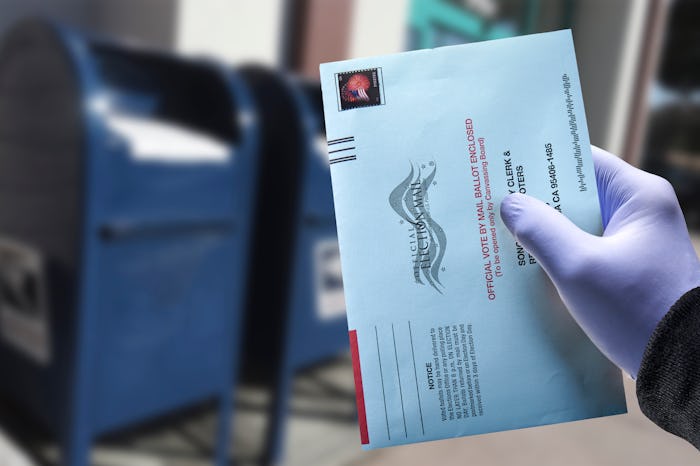News

Is There A Difference Between Absentee Ballots & Mail-In Voting?
As the novel coronavirus continues to spread in states across the country, the idea of voting in person, which could mean crowded polling places and long lines, has many voters concerned. As a result, many are turning to absentee ballots or mail-in voting. But just what is the difference between absentee ballots and mail-in voting? The truth is, the terms are often used interchangeably, both involve ballots being sent through the mail, and there's no firm legal distinction between them.
"A ballot that has been sent to a voter and is voted outside of a polling place or election official’s office has traditionally been referred to as an 'absentee ballot' and the person who votes that ballot has been called an 'absentee voter,'" the National Conference of State Legislatures states on its website. "This terminology is common in state law and comes from the concept that voters would use this option only when they were 'absent' from their neighborhood polling place on Election Day."
According to The Washington Post, the use of absentee ballots began during the Civil War to enable soldiers stationed outside their home state to vote. More and more states adopted the practice, expanding it to include any voter who might be "absent" from their polling place on Election Day.
"As time has gone on and more and more voters request a ballot in advance as their default voting method, and as states have begun offering more opportunities for voters to do so, the terminology has evolved," the National Conference of State Legislatures noted. "Some states refer to 'advance ballots,' 'mailed ballots,' 'by-mail ballots,' 'mail ballots' or 'vote-by-mail ballots.'"
In Colorado, Hawaii, Oregon, Washington, and Utah — states that conduct elections entirely through mailed ballots — the term "mail-in voting" or "all-mail voting" are more common. Registered voters in these states automatically receive their ballot through the mail without having to file an application. They can then send their ballot back through the mail or drop it off at a specified dropbox.
In states like Texas, Louisiana, Mississippi, Tennessee, Indiana, and South Carolina, where voters must provide apply for an absentee ballot and provide a valid reason for needing one, the term used is "absentee ballot." In the 29 states that require voters to file absentee ballot applications but don't mandate they provide a reason for wanting to vote through the mail, the two terms are often used interchangeably.
In essence, as Dictionary.com has pointed out, all absentee ballots delivered through the mail are mail-in ballots or part of mail-in voting. That being said, not all ballots sent through the mail are absentee ballots (in the cases of states where all voters vote by mail or are not required to provide a reason for their absence on Election Day). So while some states may prefer the term absentee ballot and others use mail-in voting, both terms refer to ballots being delivered through the mail. And despite what President Donald Trump has claimed, all ballots sent through the mail are verified before they are counted.
In an effort to reduce the number of people crowding into polling places on Election Day and, ideally, limit the spread of COVID-19, many states have expanded their absentee or vote-by-mail systems. According to a recent Washington Post analysis, at least 83% of voters will be eligible to vote by mail this fall as just six states will require those seeking absentee ballots to provide a valid excuse not related to COVID-19.
Have you registered to vote yet? Click here to confirm your voice is heard in the 2020 Election.
If you think you’re showing symptoms of coronavirus, which include fever, shortness of breath, and cough, call your doctor before going to get tested. If you’re anxious about the virus’s spread in your community, visit the CDC for up-to-date information and resources, or seek out mental health support. You can find all of Romper’s parents + coronavirus coverage here.